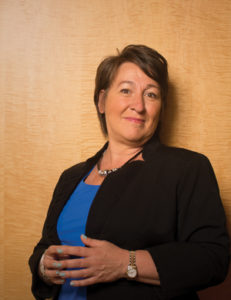Six years ago, Wall Street was in a consolidation phase.
Algorithms were hitting their stride, pushing human floor traders and brokers the side as these lines of code executes orders faster and smarter than people. To make matters worse, it was argued that electronic trading was pushing order flow off the exchanges and into dark pools or being internalized at the bigger brokers. The cost of trading fell and the markets hummed along – making everyone happy – including regulators who saw the lower cost of trading as a boom for smaller investors and retail. The trading floor in essence was nothing more than a server on a rack in some suburban neighborhood like Mahwah, NJ.
So, the machines reigned supreme in the trading world and some speculated it would be the end of the human trader and trading floor. Why use a human, as a machine could execute a trade in under 250 milliseconds, the time it takes for the eye to blink.

But over the ensuing years, the pendulum swung back the other way. The buyside wanted to talk to humans and execute their more difficult orders with humans and back on the exchanges. On the floor a buysider like Cheryl Cargie, Head Trader at Ariel Investments, could get a trader on the phone and get color and work her big orders.
“I want them to be my partner in this,” Cargie told Traders Magazine in a recent interview. “Please, call me. I still look to them for help. I mean, I pay them to be my eyes and ears out there – especially when I can’t see everything that is going on at all the venues. Show me the order flow.”
And it this buysider desire for human traders and color that has also given rise to new exchanges. These new venues employ more people an are geared towards providing liquidity and meeting other trader, investor and corporate needs that appear to have been forgotten over time – such as the need for blocks, natural liquidity and capital formation and governance.
The market now counts upwards of 16 US domiciled stock exchanges compared to 11 in 2014. Call it a reversal of fortune.
Just this past week, executives from some of the newest exchanges spoke about filling the gaps left open by the larger and more established exchanges. For example, Jonathan Kellner, Chief Executive Officer at Members Exchange (MEMX) said at the Piper Sandler Global Exchange and Fintech Conference that his to-be-launched exchange focuses on three core competencies – its people, advanced technology and investment to bring its value proposition to the buyside. And during its formation, MEMX has canvassed many market players including the buyside, wholesalers and market makers to set itself apart but it was technology, the cloud, Kellner plans to leverage the most.
“Our ability to build today using newest the newest technology helps us,” Kellner began. “Not that other exchanges don’t use the latest technology, but or building out from scratch today gives us an advantage.”

And MEMX is building itself around the cloud. The cloud, Kellner said, is the best choice for the most transparent and cost-efficient means of running its servers and storing data and records. To hear him tell it, using the cloud will help MEMX run its exchange on just one rack with 76 servers versus multiple racks and many more servers like the established exchanges that operate on 15 racks.
“By operating on fewer racks and servers there are fewer hops between racks and decreases latency and maximizes efficiency,” Kellner said. “Using the cloud and leveraging it for all to see creates a golden source of truth.”
And for traders like Cargie, transparency ranks right among her top priorities besides liquidity.
Another new bourse, the Long Term Stock Exchange, stated its ‘Holy Grail of truth’ lies in its focus on being more true to the Exchange Act of 1940 – providing capital formation for companies and ensuring good governance, according to its CEO Zoran Perkov. This would meet newer investor and institutional needs for socially conscious people.
“We’re trying to build the LTSE to offer companies and investors a long-term vision for their mutual benefit,” Perkov said. “Our target is next generation companies looking to create value over time and for society. We focus on the listings.”

It is at the listing level where companies choosing to list on LTSE can set themselves apart – focusing on grabbing investors with a long-term investing horizon rather than trading volume and meet certain long-term principles, such as being environmentally sound and focused on good governance. By focusing on these tenets, Zoran looks to attract investors with a different corporate view.
“This allows investors to have a different view of the company and be accountable to the public,” Perkov said, “and decreases risk to investors on how companies are governed. We don’t think we are creating something where everyone has to meet us but where they are comfortable meeting.“
He said LTSE charges a membership fee but doesn’t offer hidden liquidity like fellow panel member Liquidnet does and has no proprietary data feeds. Rather, LTSE wants to promote “true” oversight of listed companies and the participants who trade on his exchange.
“We’re here as an option. Our core focus is on the companies, stakeholders and owners,” Perkov said. ” Absolute trading volume is not our goal.”
The following article first appeared in 2014
Why Trading Floors Are Shrinking
Susan Certoma remembers those big trading floors. Touring them when they opened in the mid- to late 1990s – whether the massive 103,000-square-foot trading floor run by UBS in Stamford, Conn., or smaller yet impressive floors, like the Royal Bank of Canada’s turreted trading floor in Toronto – it was clear where the industry was going.
“They heralded them as the wave of the future,” said Certoma, president of the Wealth and Brokerage Processing Services at Broadridge Financial Solutions, a financial industry servicing company. “They looked like coliseums, with traders in circles on platforms.”
As Certoma, the former chief information officer for Wachovia’s Corporate and Investment banking divisions and an IT leader inside Goldman Sachs, Merrill Lynch and Lehman Brothers, recalls, “But then we began watching those huge trading floors shrink.”
Indeed, less than 20 years later – eons in the span of technological change and innovation that has shaken and reshaped many industries, including securities trading – those cavernous trading floors and the vast majority of the floor traders who worked there have vanished or at the very least become unrecognizable.
Today, an environment that is dominated by high-speed trading strategies, electronic execution and algorithmic trading software has stripped out, or at least greatly diminished, the human role in the buying and selling of stocks and other securities.
This sweeping technological evolution is the shorthand reason given for what is seen by many in the industry and the general public as the demise of the trading floor and the floor trader, but there are other factors in play. Equity trading volume has continued to drop for years. In 2008, an average of 2.6 billion shares were traded daily on the New York Stock Exchange, but that number has dropped to a little more than 1 billion shares traded daily in 2013, according to data from the Securities Industry and Financial Markets Association (SIFMA). “The continuous imposition of regulations, like the Volcker Rule, and the drop in volume in equities and other asset classes are among the strongest driving forces behind new strategies for staying profitable in this environment,” Certoma said.
But the real question isn’t why this happened, it’s what to do about it now. Can trading floors and the remaining floor traders adapt to this dramatically changing world, find niche services others cannot offer and recapture if not dominance, then at least relevance?
Some are doubtful. “If you ask me what’s the future of trading,” said Jim Leman, a trading veteran who logged more than two decades in the market groups of several Wall Street firms. “I’d say all the easy stuff is gone.”
From Paper to Algos
At any moment in the storied past of the NYSE, the trading floor looked like organized chaos, a riotous surging crowd of traders waving paper tickets, gesturing wilding and calling out in staccato yips only they could understand. Much, if not all of that, is gone. The floors of the NYSE, the Chicago Board of Trade and the massive trading floors built by the large brokerages all across Wall Street are much quieter places, given more to the almost imperceptible hum of flat-screen computers than the din of the crowd.
“It’s very different,” said legendary NYSE floor trader Kenny Polcari. “I mean, there hasn’t been open outcry for like 12 or 15 years.” Polcari, a 30-year stock trading veteran and outspoken media commentator, joined O’Neil Securities in late 2012. He has spent much of his career on the floor of the NYSE, and is a staunch defender of the institution, its culture and his role in it all.
“It drives me crazy,” he said. “People hear that you trade on the floor of the NYSE and they immediately think you’re a dinosaur.” However, Polcari points out that he has all the same technology and connectivity as any desk trader up in Boston or anywhere. He swapped his paper pad for a handheld electronic trading device long ago. “It’s all state-of-the-art now; we have access to everything here just like anywhere else, plus I can walk out onto the floor and trade.”
Still, the number of bodies on the floor of the NYSE, roughly 5,500 at its peak, has dwindled to a fraction of that, about 700 traders in all. The exchange’s new owners, Intercontinental Exchange (ICE), have promised further renovations, including $80 million to modernize the interior of the building to encourage more open spaces and greater employee interaction.
This tectonic shift didn’t just happen at the NYSE, although because the 222-year-old institution is a bastion of American capitalism, the changes were just more noticeable. The enormous UBS trading floor in Stamford is now mostly filled not with active traders, but with back-office personnel; futures exchange the New York Board of Trade was shuttered (incidentally, by ICE); and many Wall Street firms, like Morgan Stanley, have scaled back their trading floors and jettisoned legions of traders.
“Do I miss how it was?” Polcari asked. “Sure, I miss it – every single person involved misses it. But I’m still excited about this business.”
Changing Roles and New People
Reminisces aside, today’s floor traders need to adapt, and one key factor that could help them has its roots in the very changes that are causing them such pain, said Leman, now a senior advisor at international consulting firm Eleven Canterbury. Back when algorithm trading programs were in their infancy, there was a great awakening among the buyside that much of what it was using traders and brokers for could be brought in-house at a great cost savings, he explained.
Before long, the same brokers and traders who were once doing the buying and selling for large buyside institutions were now instead training those buysiders to do it for themselves. “After a while, brokers and traders could no longer say to the buyside, ‘Come to me, I’ve got the best execution or the best research,’” Leman said. “They had to also give the buyside the program trading tools and the algos, and coach them in how to use them.”
Although it might seem counterintuitive, Leman said at this point in the game, brokers and traders who can offer the latest, customized algos or specialized niche services to help the buyside get that all-elusive edge in trading or squeeze out that extra bit of profit margin are going to be the ones that survive. “Finding the other side of a trade will always be important,” he said. “But knowing what your customers want, and using your specialized insight into the market, plumbing proprietary data, and turning it all into a package or algo that your customer can use – that is what also is important now.”
Broadridge’s Certoma agreed, saying the changes in the trading industry and the evolving needs of buyside customers mean that the type of trader who may patrol the floor of an exchange or brokerage house in the future will have a very different skill set than before. “In the old days, floors were very reactive; traders would wait for an event or an announcement, and then they were off and running – now they are more analytical and technical,” she said. And that means, gone are the days of floor traders with only high school diplomas, and trader jackets being passed down from father to son – now, an M.B.A. in quantum theory may be more the rule than the exception.
That also means that as Wall Street de-populated its trading floors, many people left behind now perform very different tasks than before. “There are fewer bodies, and those that remain have taken on different roles,” Certoma said. “There are more risk-related roles, advanced technical experts, and quants and managers providing oversight.”
John Henry on Wall Street
Right alongside these new types of floor traders are, of course, the machines that run almost all the trading now, with almost 80 percent of all equity trading being done electronically. In many ways, this lodges the vanishing floor trader firmly in the ages-old philosophical battle between man and machine. So, the real question for Wall Street may be, Can a financial service industry devoid of humans really serve them?
Kevin Foley, CEO of Aqua Securities, which runs a customized block-trade alternative trading system (ATS), said he isn’t sure it can, although he admitted his views may run counter to those of some of his compatriots in the ATS field. Foley said he is not convinced that amid all the technological change, algo trading, and high-speed connections that there is no role for people to play.
“There’s nothing inevitable about the concept of more machines and fewer people,” he said. “Nothing prevents us from turning this around and going the other way.” Prior to Aqua, Foley was with Bloomberg, and he helped establish Bloomberg Tradebook, a trading solutions platform and the first still-operating entity to register as an ATS with the SEC in 1999.
Finding a way to work with those computers, rather than trying to outpace or outrun them, is another way traders can remain relevant. For example, computers’ ability to gather, interpret and react to the reams of data – the so-called big data – that are running through the wires and over the air is still relatively shaky, and mistakes in reading this data could cause market disruptions.
“Traders need to make judgment calls on all that unstructured data,” Certoma explained. “Programs shouldn’t interpret what is coming through – human interaction is needed. It’s not just a science; there’s a lot of art involved.”
Indeed, Polcari and others will point to machine-led glitches, like the Flash Crash in 2010, and note that floor traders helped keep the damage under control at the NYSE that day, proving that the human touch is still very much needed in today’s market. “When the [expletive] hits the fan, people will still want to talk to people,” he said.
A Different Way Forward
Whether floor traders will be around to adjust those proverbial fans in the future is still a question on Wall Street, where the drive for lower costs and higher profits seems to rule all decisions. There is little debate, however, that the flamboyant role of the floor trader – pad in hand, gesturing wildly in a crowd of his brethren – may be relegated to history.
But there is a desperate need, many people say, for the human hand at the helm, and that’s an idea that Wall Street, in its usual excitement for all things new, has gotten away from – and one that it’s reminded of with every market-shaking trading glitch. “There is enough dissatisfaction in the market today that they may not continue to want what the machines are doing,” said Aqua’s Foley.
Beyond that, many market observers feel it’s to the market’s detriment that its population of floor traders, who collectively held a vast store of historical market knowledge and keen insight into what was happening in the markets on any given day, has been winnowed so dramatically. Some also suggest Wall Street needs to wake up to that lesson before the next computer-induced market meltdown.
“Wall Street always oversteers the boat, going too far in each direction,” Foley said. “In my view, people will be back.”






